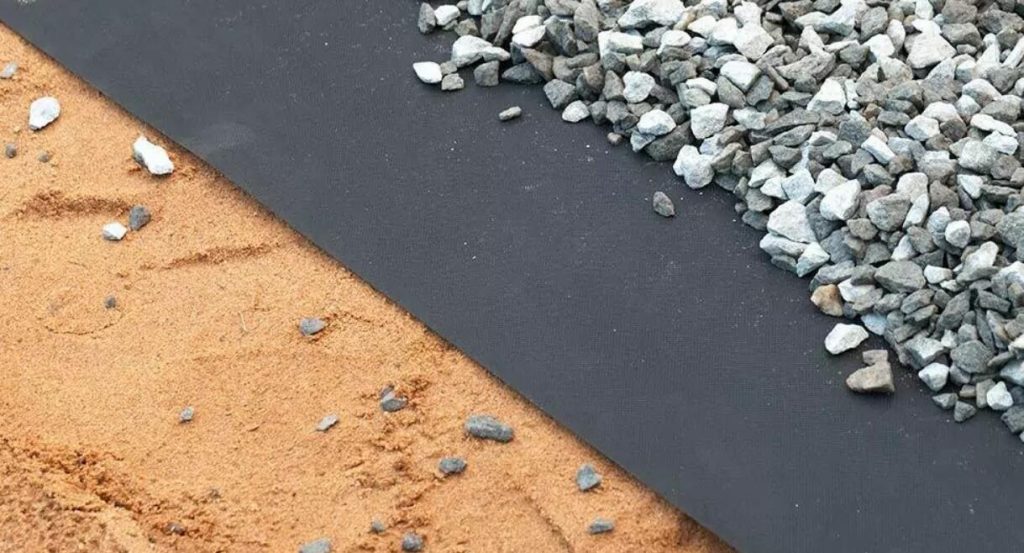
Geocomposites, a versatile material in civil engineering, have found widespread applications in various fields including soil moisture management. Here, we look at how geotextiles are being used in soil moisture retention and discuss their importance in terms of increasing soil fertility; reducing erosion and promoting sustainable agricultural practices.
Geotextiles are synthetic or natural fabrics for use in geotechnical and civil engineering works. These materials have been described according to their permeability, strength, durability, and resistance to environmental forces. There are many types of geotextiles such as woven, non-woven and knitted each designed for specific needs.
One of the main areas where geotextiles find application is soil management with respect to retaining moisture. They act as a barrier preventing excess evaporation of the water from the surface at the topsoil level. On covering the ground using mats or liners made out of geotextiles, water loss through evaporation decreases significantly hence good levels of moisture contained in soils are achieved. This is critical especially in arid or semi-arid areas that require saving water for farming purposes and landscaping.
Ensuring optimum levels of soil moisture encourages microbial activity which promotes nutrient availability within the soil. Moisture retained by these materials fosters an ideal environment under which microorganisms can easily flourish within soils. The increase in microbial activities leads to accelerated decay of organic matter thereby enriching the soil with essential nutrients. Besides this sustained wetness facilitates better root development plus nutrient absorption by plants resulting into improved quality of agricultural land as well as higher yields.
Soil erosion is one major problem in many parts due to factors like rainfalls wind power and poor land use methods (Gajendra et al., 2008). Geomembranes help control this issue since they will stabilize particles that make up soils thereby preventing runoff on surfaces above them (Baban et al., 2005). Meanwhile if installed over slopes or embankments, geotextile erosion control mats help prevent erosion by holding soil in place and providing a medium for plant colonization. In addition to preserving the integrity of the soil, this also safeguards downstream water bodies from sedimentation and pollution.
Geotextiles provide environmentally friendly strategies for maintaining soil moisture in the context of sustainable agriculture. When properly managed, geotextiles can lead to saving water used in farming practices which put pressure on water resources leading to strain on fresh water sources (Chen and Zhang 2014). Also, they reduce dependence on artificial chemicals used as fertilizers pesticides because these materials enhance growth of a healthy ecosystem in soils thus promoting organic agricultural activities that minimize environmental degradation while improving long-term potential of soils.
The use of geotextiles in controlling soil moisture is applicable in many agricultural and landscaping activities. Geotextiles based solutions are versatile and cost effective for sustainable management of soils ranging from crop cultivation under arid conditions to urban areas managed through landscaping projects. Orchards, vineyards, golf courses and roadside plantings frequently employ geotextile mulches, liners or erosion control mats to adjust soil moisture content optimally favoring growth of vegetation.
The role of geocomposites within the field of soil moisture retention is expected to grow further given the increasing need for sustainable land uses. The existing researches mainly concentrate on enhancing characteristics plus durability associated with these products as well as trying out new applications that deal with soil conservation and water resources management (Tiwari et al., 2016). With improved technological innovations alongside rising concern over ecological issues, geosynthetic textiles are going to have a pivotal impact upon influencing future agro-based developments.
Geotextiles also called geosynthetics, applied for retaining soil moisture have great positive effects on fertility of the soil, erosion control and sustainable agriculture in conclusion. Soil moisture levels can be efficiently managed, water resources conserved and negative consequences of soil erosion mitigated by utilizing the permeability and strength of geotextile materials. In our journey towards greener land management strategies, these emerge as essential tools helping us to reach our targets which include ecological preservation and development that will meet present demands while protecting future needs.






